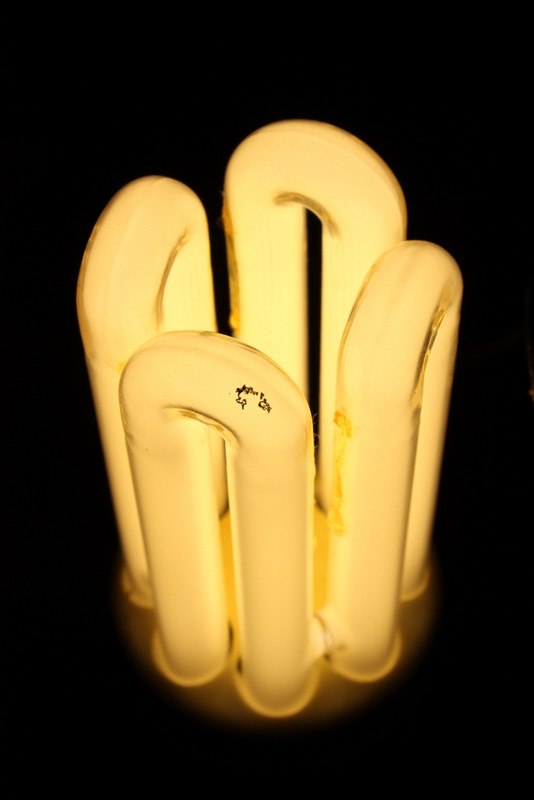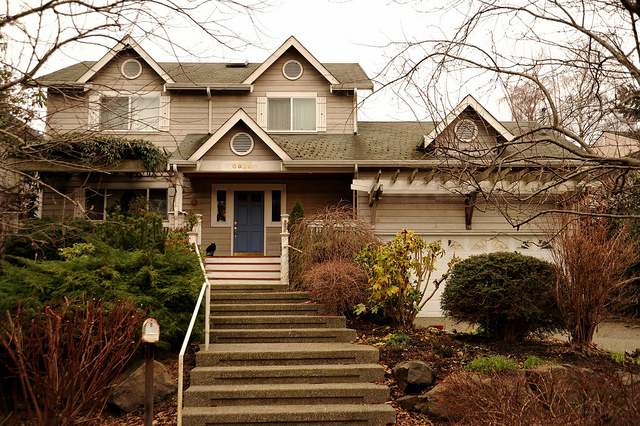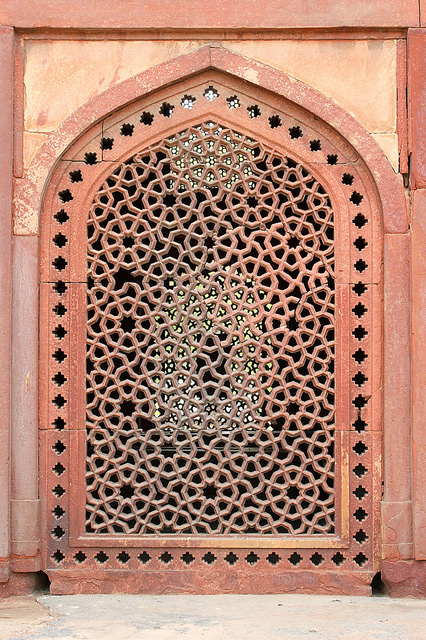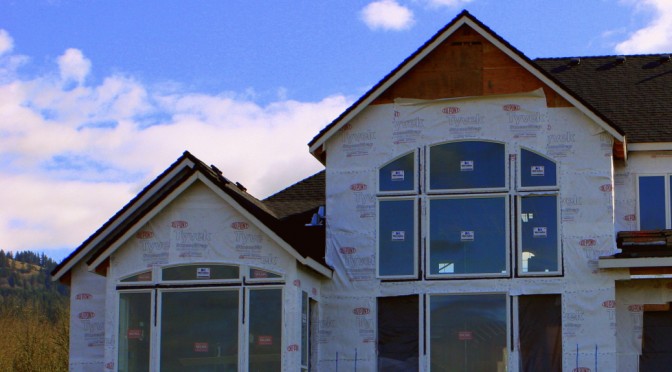One immediate way that we can cut our CO2 emissions is to just use less energy. Since our homes and other buildings are huge energy users they are good places to start. By using passive design practices, we can build and maintain more energy efficient homes by using energy from the sun or the ground instead of energy from the grid to serve our needs.
Natural Light and Proper Siting
Using the sun to provide most of our light can reduce the amount of electricity we use and can save money – both on our electric bill and in the cost of light bulbs.
The best time to think about using natural light in place of electric light is before construction. At this point, thinking about window placement can provide a building with adequate light for much of the day. In the summertime, well placed windows and an open floor plan can provide for plenty of light well into the evening hours.
To this end, siting a house properly can be very effective in providing natural light. We often think that the face of a house must be parallel to the street, but depending on the direction that the street runs, this may not be the best position for the windows and the walls. Taking into account the cardinal directions and the angle of the sun throughout the year can help determine the optimal position of windows to take advantage of natural light.
Continuing in this vein, thinking about the layout of the rooms in relation to how and when they will be used during the day before building can help optimize the use of natural light in a structure after it is built.
South facing windows
South facing windows are the workhorse of passive lighting in the northern hemisphere (in the southern hemisphere it would be north facing windows). Because of the tilt of the earth’s axis, in the northern hemisphere the sun is angled to the south. A south facing window, then, receives light throughout the whole day, not just in the morning or evening. South facing windows are put to best use in rooms that will be used all day long.
East facing windows
East facing windows receive the strongest light in the morning, and thus are best positioned in rooms that are primarily used in the morning through late afternoon, such as an office. If you are an early riser, you may prefer to have east facing windows in your bedroom. However you may not want east facing windows in a nursery if your baby wakes with the sun, or in your bedroom if you prefer to snooze a bit later in the morning or work the night shift.
West facing windows
West facing window are pretty much the opposite of east facing windows when it comes to lighting. (I’ll get into the differences in the heating and cooling sections of this series.) They are best positioned in rooms that are used in the evening, as they will provide the most light during the later part of the day. I do a lot of cooking in the evening, so I prefer to have a kitchen with western facing windows.
North facing windows
Due to the earth’s tilt, northern facing windows will receive the least amount of sunlight, and thus are useful in rooms that are used primarly during the middle of the day, or in rooms that are meant to be kept darker. An office might be the right choice for a room with north facing windows. Or maybe this means that depending on your sleep habits and preferences, north facing windows would work well in your bedroom. If you are building a basement cellar and your basement has windows on all four sides, choosing the north wall to build your cellar against makes the most sense.
Skylights
Skylights can go a long way to lighting a room in the middle of a house. Depending on the direction they are positioned, the pitch of the roof they are installed in, and how far north or south the building is, they will provide different amounts of light during the day or evening.
So directionality and placement of windows is something that can be considered before a structure is built, but afterwards can be quite costly to change. Here are a couple examples of what can be done to improve passive lighting in your already built home or business:
Curtains
Using sheer and light colored curtains during the day can allow light into a room while still providing a bit of privacy. They can also help temper the strong rays of a rising or setting sun on east and west facing windows.
Mirrors
Well placed mirrors can help spread light into darker areas of a room or into a windowless hallway.
Wall paint
Light colored paint will reflect more light around the room, whereas darker colors will absorb more light. So if you are partial to bold wall color but don’t want to greatly reduce your ability to use passive lighting, put the color in a room with south facing windows or with windows on multiple sides. Dark and light colored flooring can be used to the same effect.
…
Are you looking for an introduction to passive design? You can find it here.
Oh, hey, Building Earth has a facebook page now. Keep up to date on posts and other interesting green news by liking us!







